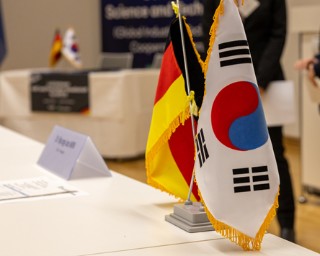
The Fraunhofer flagship project “Waste4Future” sets new standards in waste management and the circular economy for plastics.
more info
The Fraunhofer flagship project “Waste4Future” sets new standards in waste management and the circular economy for plastics.
more info
Fraunhofer IKTS is expanding its research equipment in the additive and hybrid manufacturing of ceramic components with a new type of multi-material 3D printer from AMAREA Technology GmbH
more info
Highly efficient new heat pumps without compressors – a Fraunhofer team demonstrates the potential of electrocaloric materials for heating and cooling technology.
more info
In a groundbreaking development for Western Australia, Edith Cowan University (ECU) and Fraunhofer IKTS are set to establish a cutting-edge research and innovation lab. The focus will be on sustainable ceramic technologies for industrial water treatment and hydrogen generation as well as on non-destructive testing. This initiative aims to open doors for students, drive industry growth, and deliver practical business solutions across the region.
more info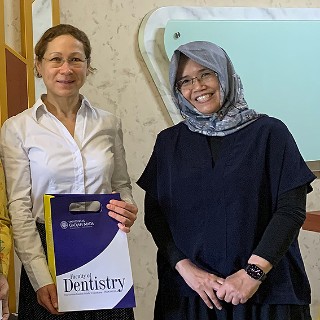
On February 5, 2025, Natalia Beshchasna was appointed adjunct professor at Universitas Gadjah Mada. At one of Indonesia's largest and most prestigious universities, she will conduct research, hold seminars and lectures, supervise doctoral students and expand the collaboration between the university and Fraunhofer IKTS. Her work will focus on polymer-based structures and nanomaterials in the dental field, as well as microfluidic-based organ-on-chip systems.
more info
One of the greatest challenges for Germany as an industrialized nation in the coming years is achieving both climate neutrality and the substitution of fossil fuels. A fundamental energy transition can only be achieved through efficiency and innovation in all industrial sectors. However, progress is slow. The project “Accelerating Decarbonization for a Resilient Economy” (DekaRB) is therefore conducting research together with the Department of Industrial, Economic and Occupational Sociology at the Friedrich Schiller University in Jena and the Thüringer Erneuerbare Energien Netzwerk (ThEEN) e. V. on the non-technical barriers to decarbonization in Thuringia. The project will run for three years and is funded by the German Federal Ministry for Economic Affairs and Climate Protection.
more info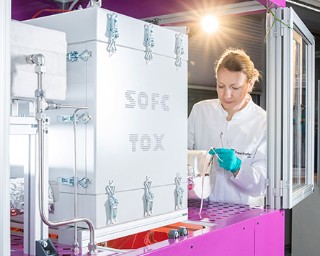
Using hydrogen to generate electricity does not cause any climate-damaging emissions. But storing and transporting the gas pose technical challenges. With this in mind, Fraunhofer researchers use ammonia, a hydrogen derivative that is easier to handle, as a starting material. Ammonia is cracked in a high-temperature fuel cell stack, and the hydrogen produced in this process is converted to electricity. The waste heat can be used as heat energy, for example.
more info
On September 1, 2024, Dr.-Ing. Constanze Tschöpe was appointed a professorship at the Brandenburg University of Technology Cottbus-Senftenberg (BTU). She is the new chair of “Cognitive Materials Analytics” in the Faculty of Mathematics, Computer Science, Physics, Electrical Engineering und Information Technology.
more info
Reliable microelectronic systems, such as electronic components in the automotive sector, must undergo lengthy and expensive testing before they can be mass-produced. With new simulation approaches, such tests can be implemented much faster, more flexibly and at a lower cost. Fraunhofer IKTS is working on this together with partners from industry and research in the “mikroVAL” project.
more info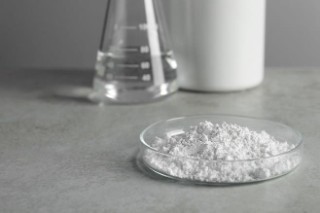
Fraunhofer researchers and their partners have developed an innovative and eco-friendly method of producing soda, essential for a wide range of industries, in the Green Soda project. The process is based on bipolar electrodialysis of brine. Ion exchange processes and the addition of CO2 result in green soda. The technology will also help to strengthen manufacturing in Germany as an industrial location.
more info
See-through like glass, but heat-resistant and scratch-proof like ceramics – transparent ceramics are unique materials and their manufacturing requires not only special know-how, but also specialized equipment and systems. In future, transparent ceramics will be able to make even greater use of their advantages over glass and sapphire in terms of robustness, hardness, transmission and cost effectiveness. The reason: The Fraunhofer Institute for Ceramic Technologies and Systems IKTS has opened a new research and development center for transparent ceramics at its Hermsdorf site on August 29, 2024 in the presence of Thuringia's Minister of Economics and Science, Wolfgang Tiefensee. The institute aims to develop a variety of innovative, economical applications with interested industrial partners.
more info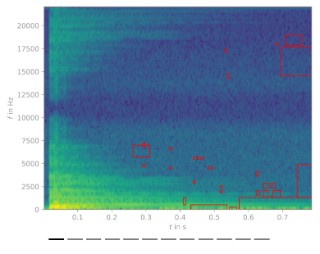
What was previously based more on intuition and experience is now objectively verifiable: The OpenZfP AI portal for non-destructive testing uses artificial intelligence to evaluate noises from machines, plants and processes and thus detects anomalies that could lead to malfunctions or downtimes.
more info
Continuity and expansion of Fraunhofer activities in Saxony-Anhalt: On January 1, 2025, the Fraunhofer Institute for Ceramic Technologies and Systems IKTS will integrate the Center for Economics and Management of Technologies CEM in Halle (Saale), thus ensuring the operational continuity of the previous branch of the Fraunhofer Center for International Management and Knowledge Economy IMW. For Fraunhofer IKTS, the move marks the expansion of its competence portfolio towards techno-economic analyses, particularly in process engineering.
more info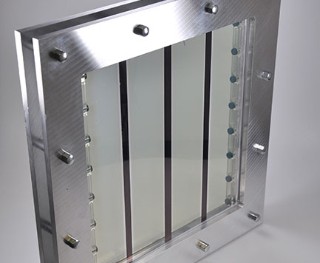
Hydrogen generated with the power of the sun could largely replace fossil fuels in the future, helping to lower carbon emissions. In the Neo-PEC joint research project, Fraunhofer specialists have developed a tandem module that is self-sufficient and reliable at producing solar-generated green hydrogen.
more infoFraunhofer researchers have developed a method of creating biogenic construction materials based on cyanobacteria. The bacteria multiply in a nutrient solution, driven by photosynthesis. When aggregates and fillers such as sand, basalt, or renewable raw materials are added, rock-like solid structures are produced. Unlike traditional concrete production, this process does not emit any carbon dioxide, which is harmful to the environment. Instead, the carbon dioxide is bound inside the material itself.
more infoPlastics made of polycarbonate are sought-after materials in industrial applications thanks to their versatility and high quality. However, recycling of plastic waste is still running up against limits these days, as mechanical recycling methods do not produce adequate qualities of recycled material for all applications. Together with chemical company Covestro Deutschland AG, Fraunhofer researchers have now developed a method that makes it possible to reclaim the substances originally used to make the polycarbonates. In catalytic pyrolysis, a controlled process of heating in an oxygen-free environment, plastic waste breaks down into its components. Manufacturers can then use the raw materials to produce new plastics.
more info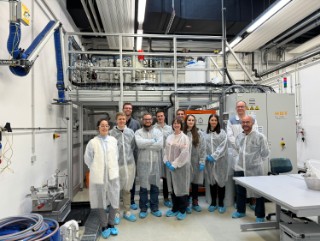
In the “MoLIBity” project, a consortium including Fraunhofer IKTS is developing practical concepts for recovering lithium from batteries. To this end, the project partners are combining findings from chemistry, materials science, process optimization, life cycle assessment and waste recycling. Fraunhofer IKTS is contributing its expertise in the validation of the recycling process.
more info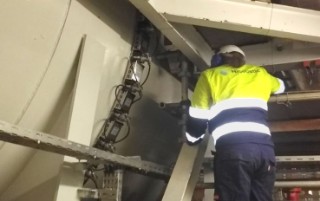
For the first time, an innovative monitoring system for pressure vessels has been installed on an offshore platform. On Snorre A off the Norwegian coast, energy supplier Equinor is testing the novel sensor system for non-contact level measurement in offshore separators using guided ultrasonic waves. The technology was developed at Fraunhofer IKTS and is marketed by the IKTS spin-off Nicoustic AS.
more info